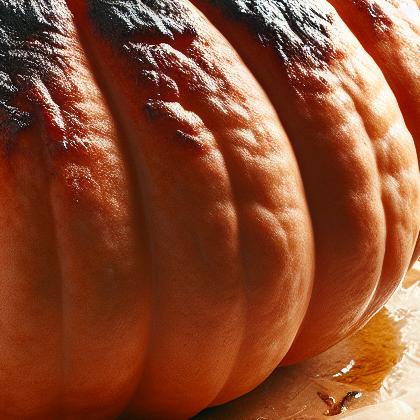Baked Pumpkin

Pumpkin is the name of a plant that refers to certain cultivars of squash, most commonly those of Cucurbita pepo, that are round, with smooth, slightly ribbed skin and deep yellow to orange coloration. The thick shell contains the seeds and pulp. Some exceptionally large cultivars of squash with similar appearance have also been derived from Cucurbita maxima. Specific cultivars of winter squash derived from other species, including C. argyrosperma, and C. moschata, are also sometimes called "pumpkin". In New Zealand and Australian English, the term "pumpkin" generally refers to the broader category called winter squash elsewhere.Pumpkins, like other squash, are native to North America. Pumpkins are widely grown for commercial use, and are used both in food and recreation. Pumpkin pie, for instance, is a traditional part of Thanksgiving meals in the United States, although commercially canned pumpkin puree and pumpkin pie fillings are usually made from different kinds of winter squash than the pumpkins frequently carved as jack o'lanterns for decoration around Halloween.
Baked pumpkin Pairs With:
Baked pumpkin Properties:
| Food Property | Type | Description |
|---|---|---|
| Flavor Profile | Sweet | Baked pumpkin has a naturally sweet flavor when cooked. |
| Umami | Baked pumpkin has a subtle umami flavor, especially when roasted. | |
| Texture | Firmness | Baked pumpkin has a firm texture after baking, with some softness depending on cooking time. |
| Moisture | Baked pumpkin retains some moisture after baking, giving it a tender texture. | |
| Nutritional Value | Macronutrients | Baked pumpkin is low in calories and carbohydrates, making it a healthy option. |
| Micronutrients | Baked pumpkin is high in vitamin A and vitamin C, providing important nutrients. | |
| Color | Natural Pigments | Baked pumpkin develops a rich orange color due to natural pigments like beta-carotene. |
| Aroma | Volatile Compounds | Baked pumpkin has a sweet and earthy aroma when cooked. |
Food Pairing App - Version 1.2.0
